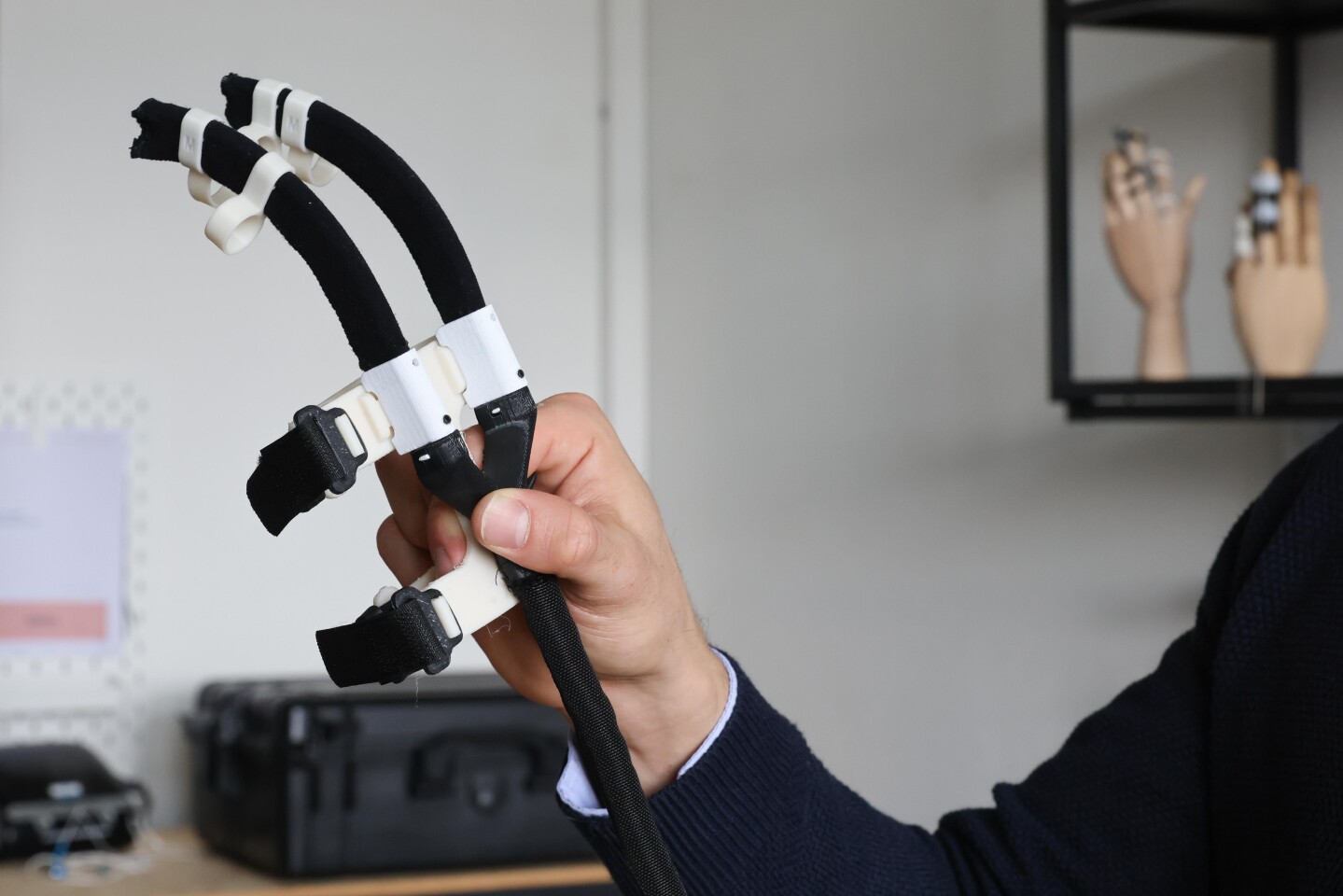When someone has been left paralyzed by a stroke or brain injury, much of their recovery involves physically guiding the affected limb though the lost motion, so their brain can relearn it. A new exoskeleton does exactly that for the hand, and patients could use it in their own homes.
Known as Emovo Grasp, the device is manufactured by Swiss startup Emovo Care, which in turn is affiliated with the EPFL research institute.
It incorporates two motor-driven cables, each one encased in a separate sheath. These serve as artificial tendons which run along the back of the affected hand, and are joined to the index and middle fingers via silicone rings.
When the user wishes to practise grasping an object, they push one button on a handheld remote control, activating the motor to push the cables forward. This causes the user's fingers to close around the object. Because the palm of their hand and the pads of their fingers are left unobstructed, they can feel the item, along with the amount of pressure that they're exerting upon it. That pressure can be modulated via the remote.
Once the person has determined that they've got a good grasp on the object, they stop the motor, keeping the artificial tendons and their fingers held in place. They can then practise lifting the item and putting it back down. To release the object, they press a second button on the remote to run the motor in reverse, so the tendons gently pull their fingers back out.

The Emovo Grasp is currently the subject of a clinical trial, involving approximately 30 brain injury patients in France, Italy and Austria. One of the test subjects has already reported that after seven years of complete immobility, he was able to move his index finger two millimeters just one day after using the device for the first time.
More clinical studies are now being planned. It is hoped that the Emovo Grasp will be commercially available as of sometime next year.
You can see it in use, in the video below.
Sources: EPFL, Emovo Care





